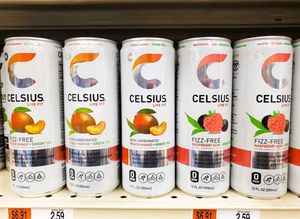-- PW Consulting recently released a comprehensive research report on the Water Jet Guided Laser Cutting System Market. The report delves into the intricate landscape of this innovative technology, shedding light on the current trends, underlying driving forces, and potential challenges shaping the industry as of 2025. Through an extensive analysis of technological advancements, regional dynamics, competitive structure, and end-user adoption, the report provides stakeholders, investors, and industrial participants with valuable insights critical for informed decision-making.
At its core, the Water Jet Guided Laser (WJGL) cutting system represents a transformative advancement in precision cutting technology. Unlike conventional laser or waterjet systems, WJGL integrates the advantages of focused laser beams with the cooling and guiding properties of a high-pressure water jet, enabling high-precision cuts even in sensitive or refractory materials. The PW Consulting report outlines the historical evolution of this technology, tracing its origins in advanced manufacturing sectors and highlighting its growing adoption across industries such as electronics, aerospace, medical devices, and automotive manufacturing.
The research report is structured to cover several key thematic areas pertinent to the Water Jet Guided Laser Cutting System Market. First, it introduces the fundamental working principles of the WJGL systems, explaining the synergy between water jets and laser beams. This section is supplemented with expert commentary from industry leaders and academic researchers, who emphasize the superior edge quality, minimal thermal impact, and material versatility of WJGL technology. The report integrates real-world case studies to illustrate how leading manufacturers are leveraging these systems for cutting ceramics, semiconductors, and composite materials with exceptional accuracy.
In terms of technology trends, the report highlights recent breakthroughs in laser source development, nozzle engineering, and automation integration. The rapid shift towards fiber lasers, the optimization of nozzle geometries to reduce water consumption, and the application of real-time control software are underscored as vital enhancements. PW Consulting’s analysts cite interviews with technology officers and R&D directors, providing insight into ongoing innovation pipelines— including efforts to boost cutting speed, reduce maintenance downtime, and lower total cost of ownership.
The study dedicates a substantial section to the end-user perspective. It segments the market by application area, detailing the adoption drivers and operational challenges faced by different industrial users. In the electronics sector, for example, the report discusses how miniaturization and the need for burr-free, micro-scale cutting are fueling demand for WJGL systems. In aerospace and defense, stringent quality standards and the move towards advanced composite materials are major factors prompting manufacturers to invest in WJGL capabilities. Meanwhile, the medical devices industry values the process for its ability to produce smooth edges and precise patterns without introducing thermal stress to sensitive components.
Geographical analysis forms another pillar of the PW Consulting report. The market is evaluated along regional lines, with deep dives into production, consumption, regulatory, and supply chain dynamics in Asia-Pacific, North America, Europe, and other key regions. The report points out that leading global suppliers are increasingly establishing technical support centers and joint ventures in rapidly industrializing emerging markets, notably in India and Southeast Asia. Meanwhile, European manufacturers are noted for spearheading green manufacturing standards, emphasizing water recycling and energy efficiency in WJGL system operations. Regional policy initiatives— such as subsidies for smart manufacturing and compliance with safety norms for laser equipment— are also examined as critical external factors influencing market activity.
Competitive landscape is another focal point of the study. The report catalogues the major global and regional companies participating in the Water Jet Guided Laser Cutting System Market. It provides detailed profiles of leading vendors, encompassing their technology portfolios, strategic partnerships, R&D investments, as well as business expansion initiatives. The report further discusses the influx of start-ups and niche players bringing specialized solutions— for example, compact WJGL machines for onsite use or systems tailored for micro-machining applications. Expert market analysts weigh in on the shift towards customized solutions and the emphasis on after-sales service excellence as differentiators in an increasingly competitive field.
Supply chain analysis receives significant attention within the report. The analysts map out the procurement and integration of key system components such as high-power laser units, precision water pumps, diamond nozzles, and motion control electronics. Disruptions related to semiconductor shortages and global logistics volatility are discussed, alongside industry responses such as nearshoring of component manufacturing and diversification of supplier bases. The report incorporates feedback from OEMs and Tier 1 suppliers, shedding light on best practices in inventory management, supplier qualification, and technology transfer processes.
In addition to qualitative insights, the PW Consulting research incorporates quantitative data to provide a data-driven foundation for the analysis. The report offers data visualizations, charts, and tables summarizing key indicators such as equipment installation rates, adoption levels across industries, and capital expenditure trends. The authors have drawn upon a combination of primary interviews, publicly available financial filings, regulatory filings, and proprietary databases to construct an authoritative representation of the current and anticipated market conditions.
The regulatory environment is another area explored in detail. The report examines current safety regulations and certification standards relevant to water jet and laser systems, both at the regional and international level. This includes references to guidelines issued by bodies such as the International Electrotechnical Commission and national occupational safety agencies. The growing importance of environmental compliance, especially with regard to water usage and waste management, is addressed through analysis of evolving legislation and its impact on system design and operation.
Human capital and training needs are also considered in the report. With the increased complexity of WJGL systems relative to traditional cutting tools, there is rising demand for skilled technicians and process engineers. The report reviews training programs offered by equipment vendors, professional organizations, and technical institutions, noting trends towards e-learning solutions and augmented reality-assisted equipment maintenance. Feedback from industry representatives suggests that workforce development remains a key challenge for scaling WJGL adoption, particularly in regions with less-established technical training infrastructure.
Looking at innovation ecosystems, the report spotlights collaborations between universities, research institutes, and industrial companies focused on next-generation WJGL systems. Active research areas include new laser wavelengths tailored to challenging materials, adaptive control systems for optimizing cut quality, and digital twin simulations for process optimization. The report references collaborative pilot projects that have successfully demonstrated proof-of-concept solutions in fields such as ultra-thin glass cutting for flexible displays and microfabrication of medical stents.
The report includes scenario analysis, outlining both potential growth catalysts and risk factors for the Water Jet Guided Laser Cutting System Market in the near and medium term. Factors such as continued advances in hybrid machine integration, supply chain digitalization, and the proliferation of Industry 4.0 manufacturing concepts are considered as possible accelerators for market evolution. Conversely, technological hurdles, regulatory uncertainty, and skills shortages are evaluated as potential headwinds. The report concludes with strategic recommendations for various stakeholders, including manufacturers, investors, and policymakers, aimed at fostering a resilient and innovative market environment moving forward in 2025.
Contact Info:
Name: Lacy Lee
Email: Send Email
Organization: PW Consulting
Website: https://pmarketresearch.com/auto/water-jet-guided-laser-cutting-system-market/
Release ID: 89169437
If there are any deficiencies, discrepancies, or concerns regarding the information presented in this press release, we kindly request that you promptly inform us by contacting error@releasecontact.com (it is important to note that this email is the authorized channel for such matters, sending multiple emails to multiple addresses does not necessarily help expedite your request). Our dedicated team is committed to addressing any identified issues within 8 hours to guarantee the delivery of accurate and reliable content to our esteemed readers.







